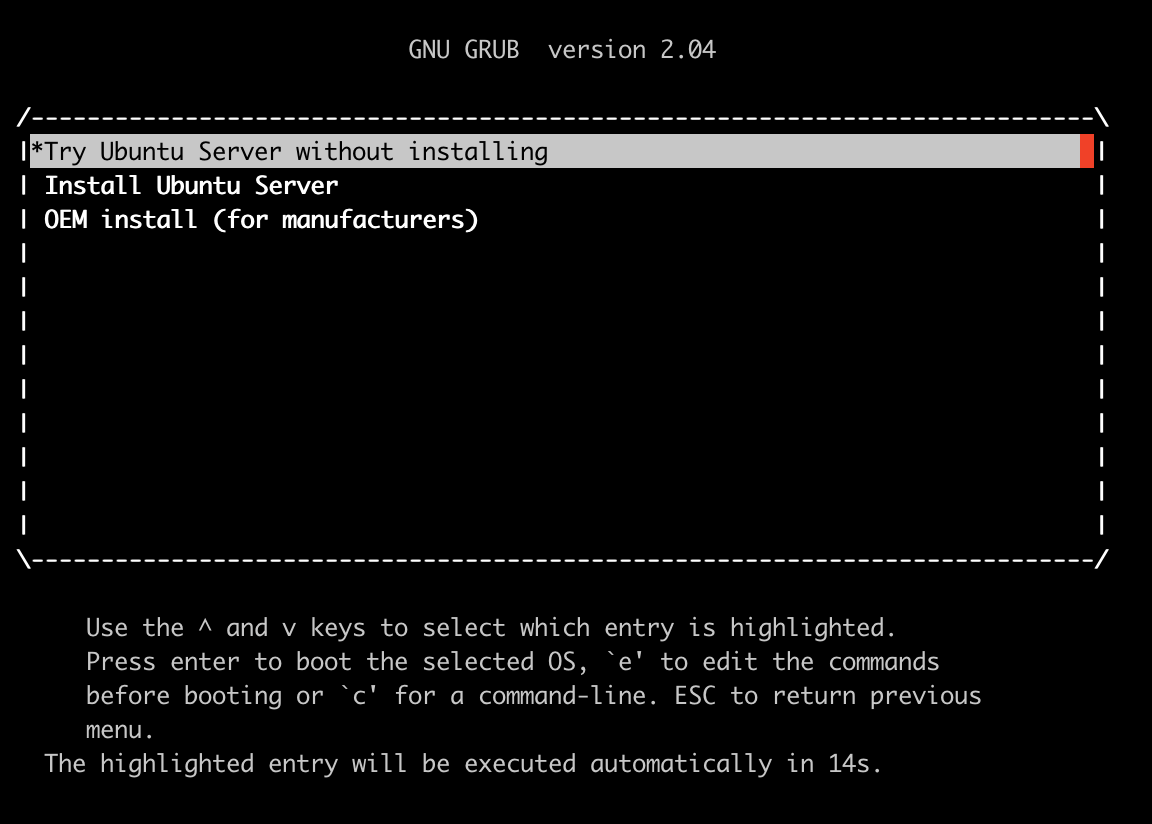
You should arrive at an Ubuntu login prompt. $ qemu-system-aarch64 -M virt -cpu cortex-a57 -m 2048 \
#QEMU UBUNTU SERVER INSTALL#
Run QEMU to boot your newly installed virtual machine, but this time without the install media. drive if=none,id=cd,file=/local/ install-images/ubuntu-20.04- live-server-arm64.isoĪt the boot menu that appears select “Install Ubuntu Server”.įollow the prompts until the installation is complete.Īfter the installation is complete shutdown the virtual machine and QEMU will exit to the host Linux prompt: $shutdown now Boot the newly installed virtual machine drive if=pflash,format=raw,file= flash1.img \ drive if=pflash,format=raw,file= flash0.img,readonly \ drive format=qcow2,file=hda.qcow2, if=none,id=drv0 \ object rng-random,filename=/dev/ urandom,id=rng0 \ device virtio-net-pci,netdev=net0, romfile="" \

If you go through the changelogs of Qemu, libvirt and Ubuntu youll see that there were plenty of.
We doing a Ubuntu Server install and so everything is console based and there is no GUI. As documented (also has config examples for virtiofs) in the Ubuntu server guide - see section 'Sharing files between Host<->Guest' - that feature is enabled and working in later versions of qemu/libvirt and thereby later versions of Ubuntu.#QEMU UBUNTU SERVER ISO#
The install image ISO will appear as a CD drive to the virtual machine and will automatically launch the installer. $ qemu-img create -f qcow2 hda.qcow2 16G Boot the virtual machine and run the Ubuntu installer Set up empty disk qcow2 image (16G in this example) where Ubuntu will be installed. Create an empty 64MB flash image to hold UEFI variables. $ cp /usr/share/qemu-efi-aarch64/ QEMU_EFI.fd flash0.imgĢ. Place the UEFI image in a 64MB simulated flash. The UEFI image will be placed in a 64MB simulated flash and an empty simulated 64MB flash will be used for UEFI variable.ġ.

You can find 20.04 release images here: $ wget -O Prepare flash and disk images In this example we are using the Server variant of Ubuntu. Download an Ubuntu distro install ISO image. Install a pre-built UEFI image for QEMU $ sudo apt-get install qemu-uefiģ. Install QEMU $ sudo apt-get install qemu-system-armĢ. Normal service resumed, no configuration or anything. I may show the steps for Ubuntu desktop with a GUI in a future post. They found another hardware server box and restored the VM from its shadow machine in a couple of hours. Ubuntu Server is console based and so everything in these steps uses a console and no GUI. The virtual machine uses UEFI boot firmware. The x86 host system was running Ubuntu 18.04.

Since the default is 0 and gives you no time to access the GRUB menu.Follow the steps below to install Ubuntu Server 20.04 on a QEMU aarch64 (Armv8) virtual machine from the Linux command line. Which overrides settings from /etc/default/grub.īesides the desktop settings, you also need to set: GRUB_TIMEOUT=10 Keep in mind that this image also has a file: /etc/default/grub.d/50-cloudimg-settings.cfg
#QEMU UBUNTU SERVER SERIAL#
# Show grub on both serial and on display.įirst I logged in once with the GUI, edited those configs, and then re-booted the VM. GRUB_CMDLINE_LINUX_DEFAULT="quiet splash" # Add console=ttyS0, or else kernel does not output anything to terminal. In that case it uses the hardware virtualisation technology to virtualise guests. However, it is more often used as a virtualiser in collaboration with KVM kernel components. # Remove quiet to show the boot logs on terminal. QEMU is a machine emulator that can run operating systems and programs for one machine on a different machine. # Optional kernel options that you very likely want. Otherwise, you have to press ESC to see GRUB: Here is the minimal change to /etc/default/grub I needed to do on Ubuntu 18.04 desktop image to get things working nicely: # Show the menu by default.


 0 kommentar(er)
0 kommentar(er)
